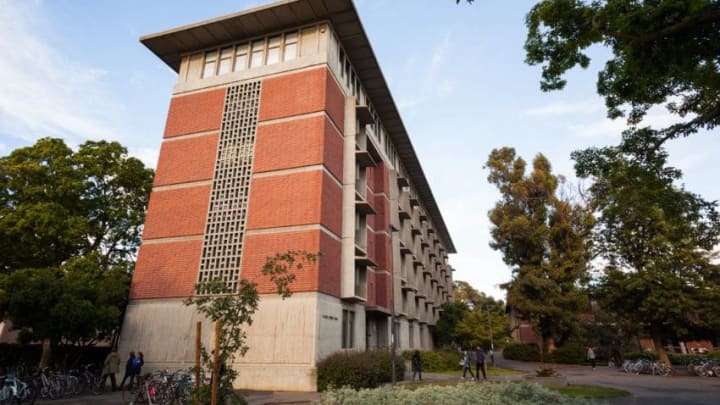A UC Davis graduate created a 32,000-piece topographical Lego map of the state of California for the school’s department of land, air and water resources.
Chris Zaleski attended Legoland on opening day. His family has season passes to the park. So when, as a student at UC Davis, a land, air and water resources (LAWR) staffer asked him if he had any experience building Legos, the answer was a resounding yes. Since then, he has built three Lego model maps of California, the last and most recent of which he completed entirely by himself.
Zaleski, who now works at the Solano County Water Agency, began the 32,000-piece build in January. It sits on an eight-by-four foot plywood display and the tallest point is a model Mount Whitney, 26 lego bricks high. Zaleski used different color bricks to represent the different uses of land in California. Red bricks represent urban areas, blue are water, green forest. Brown bricks represent agricultural lands. The entire project is built to scale and the department intends for the model to show people California’s varied ecology and rich biodiversity. They also want to emphasize how topography influences land use across the state.
Furthermore, the department hopes the model highlights the importance of remote sensors that help scientists measure the earth with satellites, planes and drones.
This is the third Lego model of California that LAWR has built and Zaleski helped with all three. The first was in 2014, primarily constructed by atmospheric science and environmental science students. It used a fog machine and fan to demonstrate coastal fog penetration.
The 2017 model was on display at UC Davis Picnic Day, an annual open house to showcase student’s work. It will then travel to various science museums in California and, potentially, Legoland. While the other models no longer exist, the David Enterprise reports that this year’s model will be encased and ultimately left on display at UC Davis.
